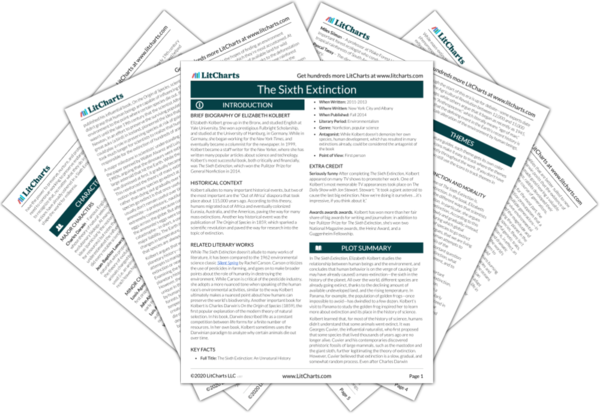Natural selection
A theory, developed by Charles Darwin in the mid-19th century, that posits that the Earth’s species are locked in a perpetual struggle to survive and reproduce. Darwin had two key insights. First, that some species…
read analysis of Natural selection
Catastrophism
Popularized by Georges Cuvier in the early 19th century, catastrophism is a theory positing that species go extinct because of sudden, catastrophic events. Examples could include earthquakes, floods, or the massive asteroid impact that killed…
read analysis of Catastrophism
Acidification
A process in which the Earth’s oceans absorb carbon dioxide and quickly becomes more acidic, endangering the survival of many marine species, including coral. Because it is caused by the absorption of carbon dioxide from…
read analysis of Acidification
Uniformitarianism
The theory, popularized by Charles Lyell in the early 19th century, that species gradually go extinct over extended periods as a result of gradual changes, such as environmental changes, decreasing resources, and so on. As…
read analysis of Uniformitarianism
Anthropocene
A term for the modern era of the Earth, though the start of this era is up for debate—some experts date it to the Agricultural Revolution between 12,000 and 15,000 years ago, while others argue…
read analysis of Anthropocene
Get the entire Sixth Extinction LitChart as a printable PDF.













